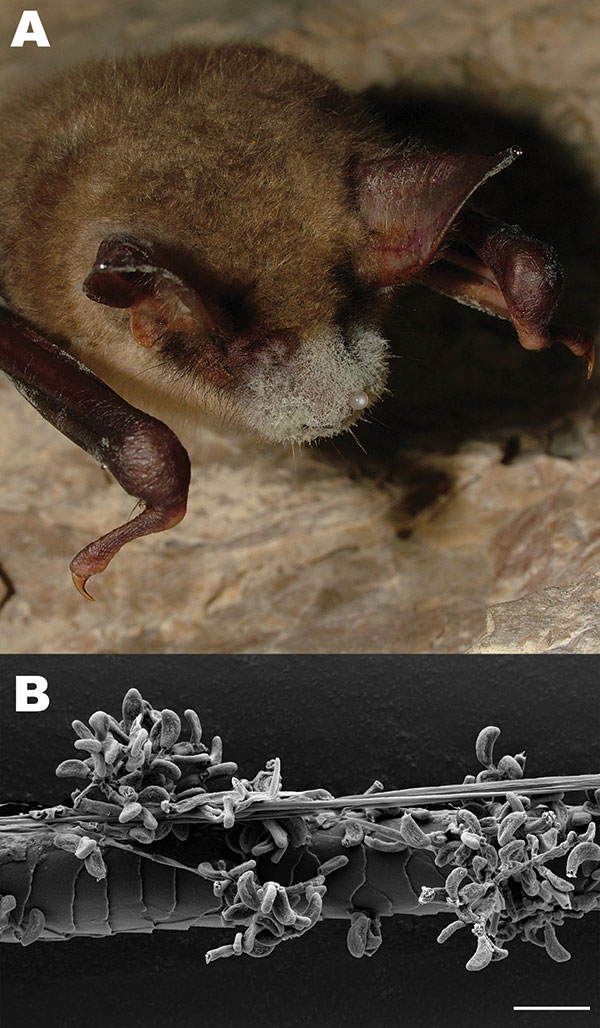White-Nose Syndrome Fungus (Geomyces destructans) in Bats, Europe
Gudrun Wibbelt

, Andreas Kurth, David Hellmann, Manfred Weishaar, Alex Barlow, Michael Veith, Julia Prüger, Tamás Görföl, Lena Grosche, Fabio Bontadina, Ulrich Zöphel, Hans-Peter Seidl, Paul M. Cryan, and David S. Blehert
Author affiliations: Leibniz Institute for Zoo and Wildlife Research, Berlin, Germany (G. Wibbelt); Robert Koch Institute, Berlin (A. Kurth); University of Oldenburg, Oldenburg, Germany (D. Hellmann); Bat Conservation Working Group, Gusterath, Germany (M. Weishaar); Veterinary Laboratory Agency, Somerset, UK (A. Barlow); Trier University, Trier, Germany (M. Veith); Coordination Agency for Bat Protection in Thuringia, Erfurt, Germany (J. Prüger); Nature Conservation Foundation of Tolna County, Szekszárd, Hungary (T. Görföl); Echolot GbR, Münster, Germany (L. Grosche); SWILD–Urban Ecology and Wildlife Research, Zurich, Switzerland (F. Bontadina); Saxonian State Office for Environment, Agriculture and Geology, Dresden-Pillnitz, Germany (U. Zöphel); Technical University Munich, Munich, Germany (H.-P. Seidl); US Geological Survey, Fort Collins, Colorado, USA (P.M. Cryan); US Geological Survey, Madison, Wisconsin, USA (D.S. Blehert)
Main Article
Figure 1

Figure 1. A) Greater mouse-eared bat (Myotis myotis) with white fungal growth around its muzzle, ears, and wing membranes (photograph provided by Tamás Görföl). B) Scanning electron micrograph of a bat hair colonized by Geomyces destructans. Scale bar = 10 µm.
Main Article
Page created: March 30, 2011
Page updated: March 30, 2011
Page reviewed: March 30, 2011
The conclusions, findings, and opinions expressed by authors contributing to this journal do not necessarily reflect the official position of the U.S. Department of Health and Human Services, the Public Health Service, the Centers for Disease Control and Prevention, or the authors' affiliated institutions. Use of trade names is for identification only and does not imply endorsement by any of the groups named above.
